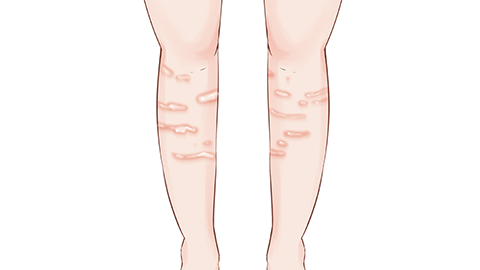What causes a hard lump on the knee that hurts when pressed?
The knee refers to the knee joint. Generally, a hard lump on the knee joint that is painful upon pressing may be caused by growing pains, muscle spasms with subsequent induration, folliculitis, bursitis, osteoarthritis, and other similar conditions. Symptomatic management through general treatments and medication may be necessary. If discomfort persists, prompt medical consultation is recommended to receive appropriate treatment under a physician's guidance. Detailed explanations are as follows:

1. Growing Pains
Adolescents during the growth and development stage may experience growing pains. Around the knee joint, the bones may grow at a relatively faster rate, while the surrounding soft tissues, such as muscles and tendons, might temporarily lag behind the pace of bone growth. This mismatch in growth can cause slight pulling and friction on the local tissues, leading to the formation of small, hard nodules around the knee joint. These nodules are generally temporary and may gradually disappear as the body continues to develop and the soft tissues adapt accordingly.
2. Induration After Muscle Spasms
When leg muscles, especially those around the knee joint, experience spasms, the muscles undergo sudden, forceful contractions. After the spasm subsides, local blood circulation may be temporarily affected, and the muscles might not immediately return to their normal state, instead forming a hard nodule. Applying heat compresses and massage is recommended to improve blood circulation and help alleviate symptoms.
3. Folliculitis
When hair follicles around the knee joint become infected with bacteria, a localized inflammatory reaction may occur, forming red papules or pustules accompanied by tenderness upon pressure. Symptoms may also include localized itching and elevated skin temperature. It is recommended to use medications such as mupirocin ointment, fusidic acid cream, or compound polymyxin B ointment under a physician's guidance for treatment.
4. Bursitis
Bursitis refers to inflammation of the bursae around the knee joint. Bursae are small fluid-filled sacs that serve to reduce friction between muscles, tendons, and bones. When the bursa becomes inflamed, a hard mass may form along with pain. Patients may also experience localized redness, swelling, warmth, and limited knee joint mobility. It is recommended to follow medical advice and use medications such as methylprednisolone tablets, loxoprofen sodium tablets, or meloxicam tablets to relieve symptoms.
5. Osteoarthritis
Osteoarthritis occurs due to long-term joint movement that causes wear and tear of the articular cartilage and uneven joint surfaces, subsequently leading to bone spurs and inflammatory reactions around the joint. These pathological changes can irritate surrounding nerves, potentially forming hard lumps accompanied by tenderness upon pressure. Symptoms often include joint stiffness, limited mobility, and crepitus. It is recommended to use medications such as glucosamine sulfate tablets, glucosamine hydrochloride tablets, or Gukang capsules under a physician's guidance for treatment.
It is advised to reduce knee joint activity in daily life, avoid prolonged standing, walking, or strenuous exercise, and allow the knee joint sufficient rest to help alleviate symptoms.




